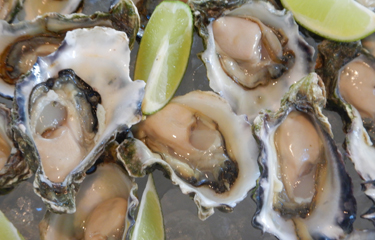Two moves by state governments in the U.S. Southeast have highlighted the diverging fortunes of the Gulf of Mexico’s oysters, farmed and wild-caught.
In August, the state of Texas this month launched a program to boost its oyster mariculture sector, allowing the leasing of public waters off the coast to grow and harvest oysters commercially. Following the passage of legislation legally allowing the leasing last year, the Texas Parks and Wildlife Department launched a website providing facts and information about the process and a portal through which Texas residents can apply open an oyster farm.
State Rep. Tod Hunter (R-Corpus Christi) was a leader in the legislative effort to pass the bill allowing commercial oyster aquaculture last year, arguing Texas restaurants had been forced to import farm-grown oysters from other states due to a lack of local product.
“The time has come for these Texas-grown oysters to be served in restaurants across this country,” Hunter said in a press release. “We have worked for years to bring oyster mariculture to Texas because the economic and cultural benefits for our region are limitless. This will allow us to share more of the Coastal Bend with the rest of the state and country.”
According to Texas Land Commissioner George P. Bush, oyster mariculture operations will only be permitted in areas that are ensure “compatibility with the Texas coastal marine environment.” Those granted a license to farm oysters in Texas will not be able to augment the nutrition of their oysters, but must rely solely on naturally occurring microalgae, Bush said.
“Texas is renowned not just for our abundance of natural resources, but for our ability to responsibly harness these resources to the benefit of our citizens,” he said. “Oyster beds are critical to maintaining healthy water circulation in our coastal waters. [The legislation] embodies the Texas spirit of economic independence and environmental sustainability.”
On the other side of the Gulf of Mexico, Florida has moved to close its Apalachicola Bay oyster fishery after years of population declines.
The decision, issued by the Florida Fish and Wildlife Conservation Commission in July, came in recognition of the “dire situation” of the bay’s oyster fishery. The moratorium can be extended through 2025, depending on if a recovery is seen in the oyster population.
“Apalachicola Bay in the Panhandle was once a thriving oyster producer, providing 90 percent of the wild oysters produced in Florida. Sadly, this bay has drastically declined in productivity in the last 10 years. Water withdrawals by Georgia from tributaries of the Apalachicola River have dramatically reduced freshwater flow into the bay. As oysters only live at a certain salinity level, this alteration and additional stressors, including continued fishing pressure, have resulted in a massive decline in oyster populations,” Florida Wildlife Federation President Preston Robertson said in a press release. “This is not a complete solution, but it is an important action that will support oyster recovery. It will take time and a well-coordinated effort on the part of state agencies, scientists, and the oystermen to bring back this once fabled oyster fishery, one which flourished since the mid 1800’s.”
Numerous factors have dealt blows not just to Florida’s oyster grounds, but those of the entire Gulf of Mexico. The Deepwater Horizon oil spill, hurricanes, disease, and changes in freshwater flows to Gulf rivers and streams have collectively damaged the fishery to the point where up to 85 percent of the gulf’s original oyster reefs no longer remain intact.
In 2018, Alabama canceled its wild oyster season and Louisiana and Mississippi have experienced much of their oyster populations dying off as a result of freshwater releases from the Bonnet Carré Spillway.
Due to the additional strain of the COVID-19 pandemic, the situation is also dire for oystermen in the Chesapeake Bay, another major oyster-producing area of the United States. In July, Maryland’s and Virginia’s U.S. senators, Chris Van Hollen, Ben Cardin, Tim Kaine, and Mark Warner sending a letter to U.S. Department of Agriculture Secretary Sonny Perdue urging him to support the shellfish industry through CARES Act funding.
“A total of USD 16 billion [EUR 13.6 billion] has been appropriated and allocated through CFAP to directly support agricultural producers impacted by the coronavirus,” they wrote. “USDA can include shellfish products in CFAP, and we strongly encourage the agency to allow aquaculture farmers to utilize this program.”
The senators also asked the USDA to create a short-term purchasing program for shellfish aquaculture products.
“The shellfish aquaculture industry has been impacted significantly by the disruption in normal supply chains due to social distancing measures that shuttered many businesses essential to the marketing and sale of Chesapeake Bay shellfish aquaculture products. Nearly 70 percent of all seafood consumed in the United States is consumed at restaurants and hospitality venues,” they wrote. “A survey completed 23 March to 10 April, 2020, of coronavirus impacts to the aquaculture industry indicated that 84 percent of aquaculture businesses experienced sales losses associated with the virus.”
Photo courtesy of Pascal Vosicki/Shutterstock







